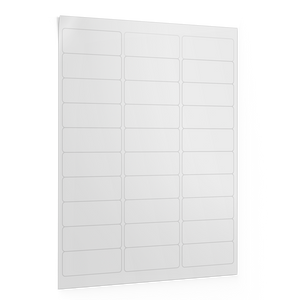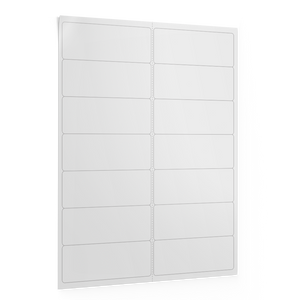Mid-Year Inventory Check? Label Up and Stay on Track
Mid-year inventory is a great chance to reset, take stock (literally), and clean up any messes before the end-of-year rush. But if your system’s a little all over the place—items stashed in mystery bins, shelves without names, or things you think were already counted—labels can help. A few smart strategies can turn a chaotic stockroom into something that actually makes sense.
Whether you're running a retail shop, warehouse, or just trying to get a handle on supply closet overflow, here are some simple, effective ways to put labels to work.
1. Color Coding Makes a Big Difference
Use different colors of inventory labels to represent departments, product types, or urgency levels. For example, blue labels for new stock, red for clearance, yellow for seasonal items. It’s a quick visual cue that helps you (and your team) sort faster and make fewer mistakes.
2. Use Labels to Flag Items That Need Attention
Inventory is never perfect. Maybe you’re short a few units, or maybe something looks damaged. Use temporary labels to mark items that need to be recounted, moved, or held for inspection. “Needs Review” or “Damaged” stickers can go a long way in helping you stay organized mid-count.
3. Don’t Forget the Shelves
Labeling bins is great, but don’t forget your shelving units. Shelf labels for racks, rows, and bins make it easier to return items to the right spot and help anyone new quickly find their way around.
4. Make Expiration Dates Easy to Spot
If your inventory has a shelf life, make that information impossible to miss. Add visible labels with expiration or rotation dates so that older items get used first. It helps avoid waste and makes inventory audits faster.
5. Keep Return and Restock Areas Labeled
Returns and restocks often get lumped together in a “deal with it later” pile. Create clearly labeled sections or bins for items that are going back into inventory, going out for return, or need a decision. It’ll save time and reduce confusion later on.
6. Use Labels to Group Items for Transfers
If you’re moving inventory between locations, print or write the transfer info directly on the labels. Include the destination, date of transfer, and description of the contents (count, SKU, etc.). This makes it easier to track movement and avoid duplicates or misplaced items.
7. Label for Counts, Not Just Storage
During inventory, it helps to have temporary labels to mark which areas have already been counted. This prevents double-counting or skipped sections—especially when multiple people are involved in the process.
8. Prep for Next Time
Once the count is done, use this opportunity to improve your inventory labeling system going forward. Should your shelf labels be larger or easier to read? Are certain categories always causing confusion? A few tweaks now could save hours next time around.
Make Inventory Tracking Easier
Inventory doesn’t have to be a headache. With a little planning, a decent stock of blank labels, and a solid labeling system, you can save time, avoid mistakes, and make the process way less stressful. The goal isn’t perfection—it’s making your system easier to understand, faster to manage, and ready to scale when you are.
Whether you’re prepping for mid-year inventory, end-of-year inventory, or just getting your stuff in order, we’ve got a variety of blank label options that’ll help you be prepared for any situation. Shop our inventory labels and stock up with bulk pricing, quick turnaround time, and free shipping. With Label Blanks in your corner, you’ll always be ready to print labels exactly how and when you need them.








